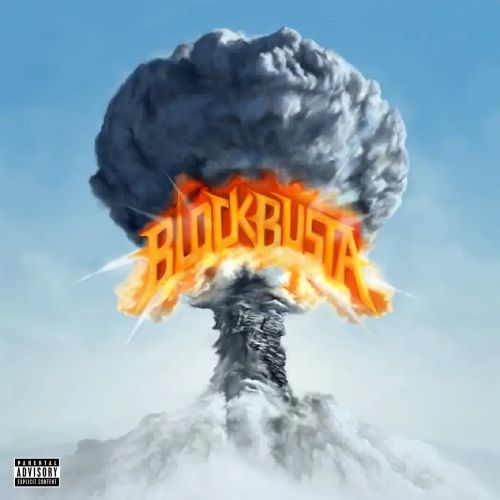“BLOCKBUSTA” indeed. If any album this year was one I wished I had rented, rather than purchased, it’s Busta Rhymes’ latest offering. The singles released beforehand did indicate this album might not be for Busta’s core fanbase that has followed his whole career, but Busta Rhymes is so well-respected by rap fans, that he could make anything entertaining. For such an imposing emcee with a distinct style, his approach is often at odds with the safe choice of guests and production, particularly in the first half of “BLOCKBUSTA”. He threatens to sound like a guest on his album, and the “BLOCKBUSTA” title feels apt, as many of these tracks act as trailers for other artists. It’s intentional, considering Busta has admitted he wishes to put other, younger artists on, and it’s this elder statesman status is something he is aware of. Unlike Nas, who has channeled his matured perspective into personal reflections and untold stories from his journey, Busta has provided an album that is more like Method Man’s approach. Fill it with guests and occasionally remind listeners of your ability to still impress.
Cunningly, Busta’s radio and podcast interviews promoting this project have largely focused on his struggles with confidence, identity, and poor mental health. The interview above is captivating, and arguably more important than the surface-level style we get from hip-hop outlets like Drink Champs, but it has an air of precise timing. It’s an interesting approach, and we cannot ignore or dismiss his honesty, or his bravery, to share the vulnerabilities that lie beneath one of hip-hop’s biggest personalities. But after the triumphant return in 2020 that saw “E.L.E. 2” receive both critical acclaim and chart success, “BLOCKBUSTA” feels like a step back to the disappointment of 2009’s “B.O.M.B.S.”.
Very few artists can go back and forth without disrupting each other’s momentum, and DaBaby holds his own with Bus’ on the boastful “BIG EVERYTHING”. The inevitable dick talk aside, it’s an entertaining collaboration and T-Pain ties it all together nicely.
With his Jamaican roots, Busta is never far from taking listeners down a ragga rabbit hole. “ROBOSHOTTA” isn’t my cup of tea at all, and it’s a Burna Boy track with a Busta Rhymes feature if anything. Despite dropping two weeks ago, the album is littered with songs rife for summer parties at the beach. “TINGS” is simpler lyrically, but no less fun as a head-nodder and more welcoming than “ROBOSHOTTA”. This theme of sunshine is also prevalent in the singles “BEACH BALL” and “LEGEND”, and the Chris Brown track “OPEN WIDE” is undeniably catchy. The successful songs are ones that simply aren’t afraid to get unhinged. “SLIDE” is brilliant fun, and probably lives up to the threats of tearing down the club that Busta boasts of. Mystikal vocals and the Neptunes samples are nostalgic enough, but it feels relevant enough to work. The chanting, random piano playing, maracas, finger clicking; it’s packed with different noises. I think there’s even a Baha Man shouting in the back. “THE RETURN OF MANSA MUSA” is Swizz Beatz at his most unhinged, although relies on a classic Michael Jackson sample to do the heavy lifting. The famous samples aren’t as carefully executed as they were on “E.L.E. 2”.
“LUXURY LIFE” with Coi Leray has been done to death by EPMD, Tha Alkaholiks, and Jay-Z. “STAND UP” riffs on Coolio’s “Gangsta’s Paradise”. None of these feel as fresh or interesting as the Bell Biv Devoe sample on “Outta My Mind”. When Busta’s not leaning on his guests, the production can get into ‘bad Eminem album’ territory. A superstar emcee firing off syllables over some of the most derivative beats of the year. The Giggs track “THE HIVE” is horrible. The Kodak Black track “HOMAGE” is horrible. Young Thug’s indecipherable whining on “OK” is heightened by the fact Busta’s booming vocals are crystal clear by comparison. It’s also horrible. “BEACH BALL” is similarly uninspired, with a basic instrumental that simply doesn’t fit Busta.
A handful of tracks showcase Busta’s unrivaled ability to stomp all over a track with characterful authority, but it’s too few and far between. It’s made all the more disappointing by the fact his previous album may well be his best work, so shifting so sharply in a different direction doesn’t make sense. Aside from 2002’s “It Ain’t Safe No More”, this is the only Busta Rhymes album without his trademark logo on the artwork. That’s not particularly interesting, but it checks out considering this doesn’t feel like a Busta Rhymes album. Something else it has in common with “It Ain’t Safe No More” is that they both debuted at #10 on Billboard, whereas all his previous releases have struck #1 or #2 (#4 for “E.L.E. 2”). Chart performance isn’t something I usually pay attention to, but this album leans so heavily on popular guests from different genres that it will certainly have been considered by the executive producer. Speaking of which, there are four of them – Busta, Swizz Beatz, Pharrell and Timbaland. Therefore, it’s not surprising it’s all a bit chaotic. Many fans had written off this album from the tracklisting alone, and they may have been right to, but even weaker Busta Rhymes albums aren’t without their merits. Of the nineteen tracks on offer here, there are just too many skippables for a Busta Rhymes album. It may not be a proper Busta album, and it may be Busta’s way of sharing the flame, rather than passing the torch (as he so eloquently describes it), but in the context of Busta’s catalog, and the rest of 2023’s hip-hop releases, it frequently disappoints.

